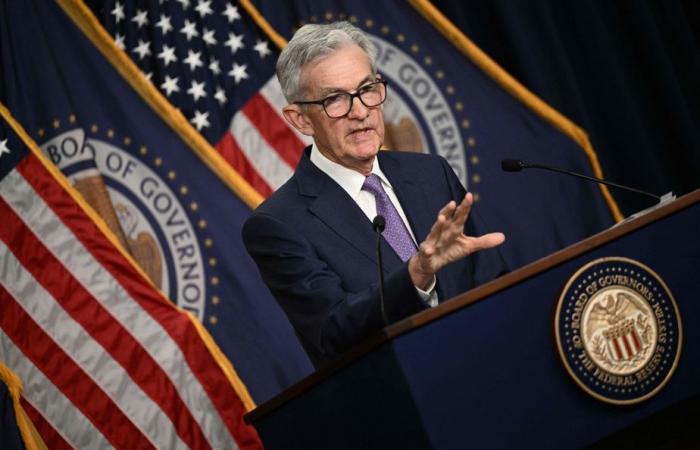(Washington) Inflation slowed to 2.6% in May in the United States, according to the PCE index, favored by the American central bank (Fed), and published Friday, the day after the debate between Donald Trump and Joe Biden who blamed each other for the price surge.
Published at 9:45 a.m.
Julie CHABANAS
France Media Agency
The decline is in line with analysts’ expectations. And this measure of inflation is evolving in the same direction as the CPI inflation index, communicated in mid-June, and on which pensions are indexed.
According to the PCE index released Friday by the Commerce Department, consumer prices increased in May by 2.6% year-on-year, compared to 2.7% in April. Over one month, they remained the same, the inflation rate being zero, compared to 0.3% the previous month.
The PCE index is the one favored by the American central bank (Fed). The institution wants to reduce it to 2% and expects to achieve this in 2026. The IMF, more optimistic, is counting on mid-2025.
The annual change in PCE “has decelerated to its slowest pace since 2021 and is within reach of the Fed’s 2% target,” said Rubeela Farooqi, chief economist at High Frequency Economics.
Excluding volatile food and energy data, so-called core inflation fell in May to 2.6% year-on-year, from 2.8% the previous month, and to 0.1% month-on-month from 0.3%.
Inflation “kills” the United States
Inflation will be on Americans’ minds when they vote on November 5 to choose their new president. This subject is so important that it opened the first televised debate of the campaign between the two candidates on Thursday evening.
Donald Trump has accused outgoing Democratic President Joe Biden of causing the inflation that the Republican candidate says is “killing” the United States.
Joe Biden accused his predecessor of having “really decimated the economy”. “That’s why there was no inflation,” he said when he took office at the White House in January 2021.
But consumers remain worried about the consequences of inflation on their purchasing power. Their level of confidence deteriorated in June, although less than expected, according to the final estimate from the University of Michigan, also published Friday.
US household income grew faster in May than in April (+0.5% versus +0.3%), as did their spending (+0.2% versus 0.1%), according to figures from the Commerce Department.
Consumer spending is nevertheless expected to grow more slowly from now on, “as slowing labor market dynamics limit income growth and push more families to restrict their spending in a context of reduced savings reserves and increased debt.” higher,” noted Lydia Boussour, economist for EY Parthenon.
Rate cuts
Consumption is the engine of growth in the world’s largest economy: it represents more than two-thirds of the gross domestic product (GDP) of the United States.
However, “the inflation environment is evolving favourably and, together with a more moderate evolution of household spending and growth, supports a shift in monetary policy towards a less restrictive stance, perhaps as early as September,” added Rubeela Farooqi.
That is to say, the Fed could finally lower its rates, which have been at their highest level since 2001 for almost a year, to the range of 5.25 to 5.50%. This would make credit less expensive for households and businesses.
The Fed had warned, during its last meeting in mid-June, that it would need to observe several months of falling inflation for the rate reduction to be launched.
Its chairman, Jerome Powell, notably estimated that the increase in wages, which is good news for Americans’ wallets, remains too high to allow inflation to return to an acceptable level.







